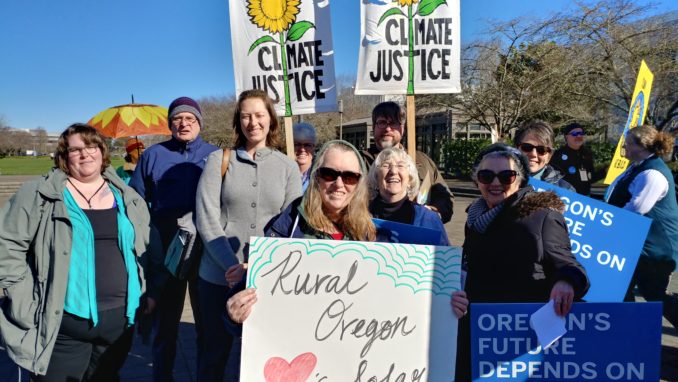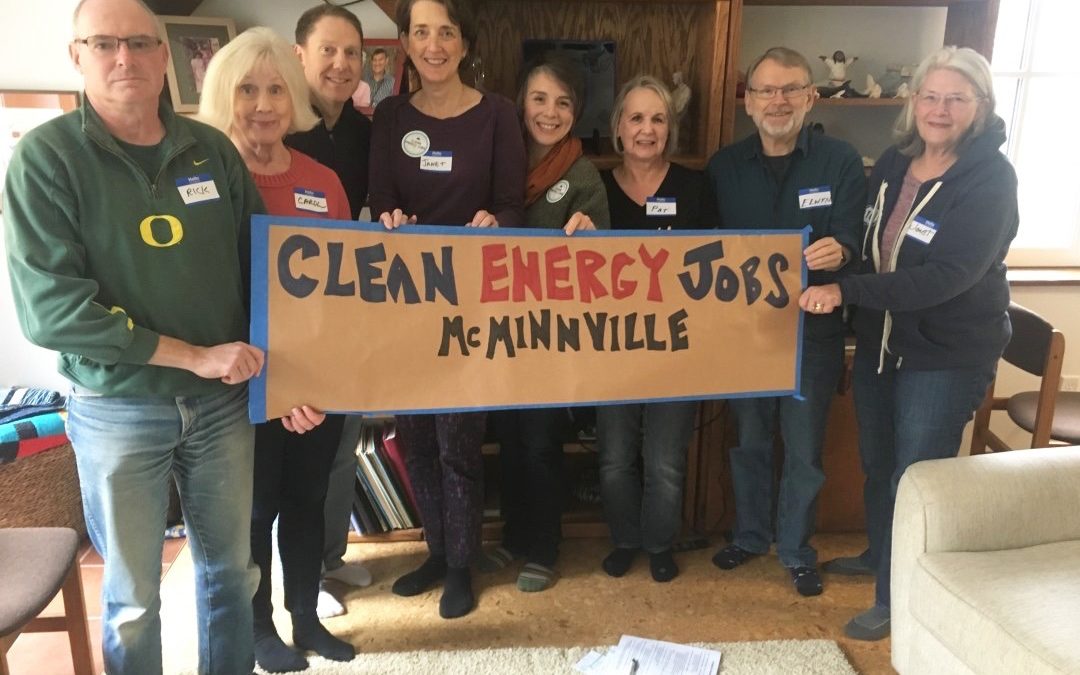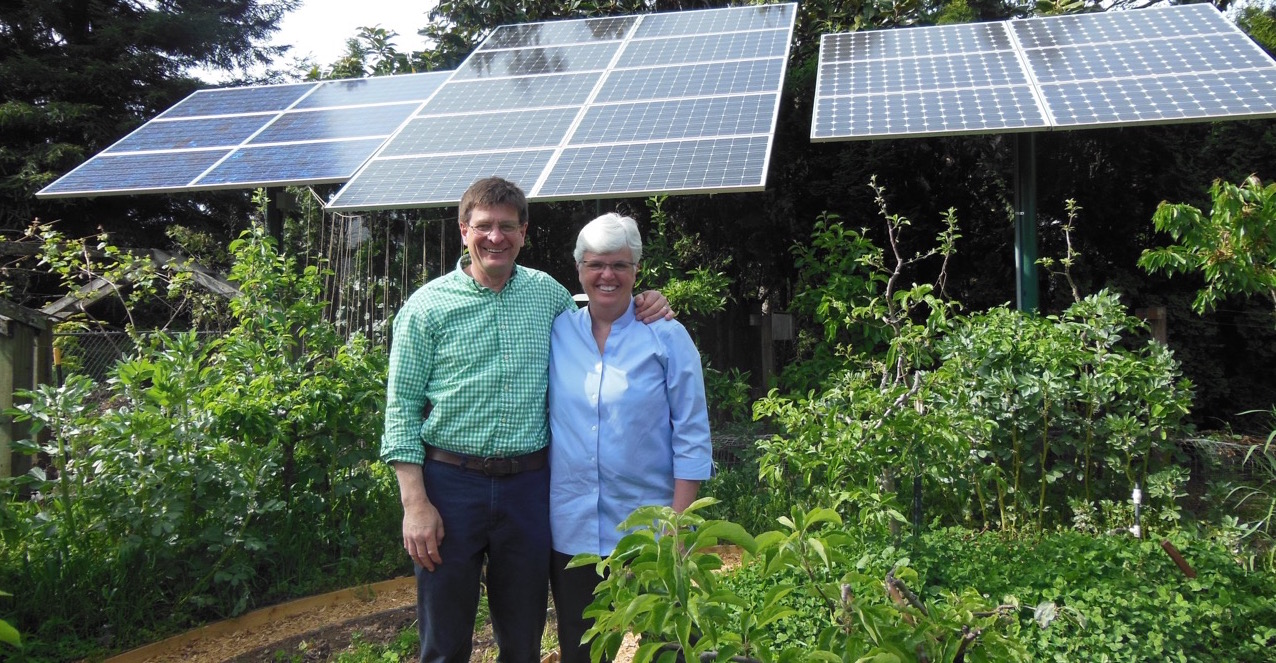This is Part 2 in a series of articles on the Clean Energy Jobs Bill being considered in the Oregon State Legislature. Read Part 1 here.
These are my McMinnville Climate Heros! They are Dick and Carol, Michael, Janet and Dana, Pat, Elwyn, Janet and me! In November (2017) we gathered as neighbors in our Net Zero living room. It was a good reminder that small changes like building our Passive House are wonderful, but mean very little when what’s needed is a re-tooled economy and a whole shift of culture with laws, incentives and a re-trained workforce to make Net Zero Living the norm. For most of us, this was the beginning of our education about the Clean Energy Jobs Bill that has now come before the State Legislature in the 2018 short session. For most of us it was preparation for doing something we had never done: speak to our State legislators face-to-face about something we deeply care about. Last week with even more McMinnvillites joining us, we went to Salem, joined with 600 others from across the State and spent time in conversation with our Senator Brian Boquist and Representative Ron Noble. Both happen to be Republicans.

The Clean Energy Jobs Bill calls Oregon to employ a Cap and Investment strategy, one that would create revenue for a transition to a clean energy economy by putting a price on greenhouse pollution and requiring the polluters to pay for the damage done. 10 States & 3 Provinces currently have some form of this strategy in place, including California and British Columbia, with Washington considering a bill this legislative session. Oregon set emissions goals in 2007 with no binding, science-based strategy to meet them. The 2018 bill re-sets the goals so Oregon will be:
- 20% below 1990 levels by 2025
- 45% below 1990 levels by 2035
- 80% below 1990 levels by 2050.
To meet these goals, the State will put a price on green house gas pollution, starting around $16/T, selling allowances to all Oregon companies emitting over 25,000 Metric Tons annually. These industries are responsible for 85% of Oregon emissions. They will purchase one allowance for each ton of greenhouse pollution they emit. The estimated revenue from these annual sales and the quarterly auctions where companies may buy and sell allowances, is estimated to be as much as $700 million annually. This revenue will be re-invested in helping those communities most impacted by climate change, in energy conservation and clean energy development. In the distribution, priority is given to: 1) communities of color, 2) low-income & disadvantaged rural communities most affected by climate disruptions and 3) re-training for those currently employed in fossil fuel industry jobs.
As the cap decreases over time, fewer allowances are available, driving the price higher, giving incentive for companies to change the way they do business, including creating new jobs in a cleaner economy. In brief:
- CAP—ratcheting down toward 80% below 1990 levels by 2050.
- PRICE—on pollution starts at approx. $16 per ton.
- ALLOWANCES—-those emitting over 25,000 T/YR buy allowances.
- AUCTIONS—-allowances are bought, sold and traded at quarterly auctions.
- PRICE INCREASES—cap lowers, fewer allowances available, price rises.
- INCENTIVES—polluters have market incentive to change practices
- REVENUE CREATED—estimated $700 M/yr re-invested across State
- INVESTMENT—in renewables, public transit, energy conservation, jobs
- EQUITABLE DISTRIBUTION—in low-income, rural & communities of color.
- JUST TRANSITION—priority to training displaced workers for new jobs.
For a great explanation of the cap and investment strategy, I recommend the video by Renew Oregon. A couple of kids explain it in their own words in “Let’s Talk About Clean Energy Jobs with Jeremy and Ava.”
Stay tuned for Part 2. . .









Recent Comments